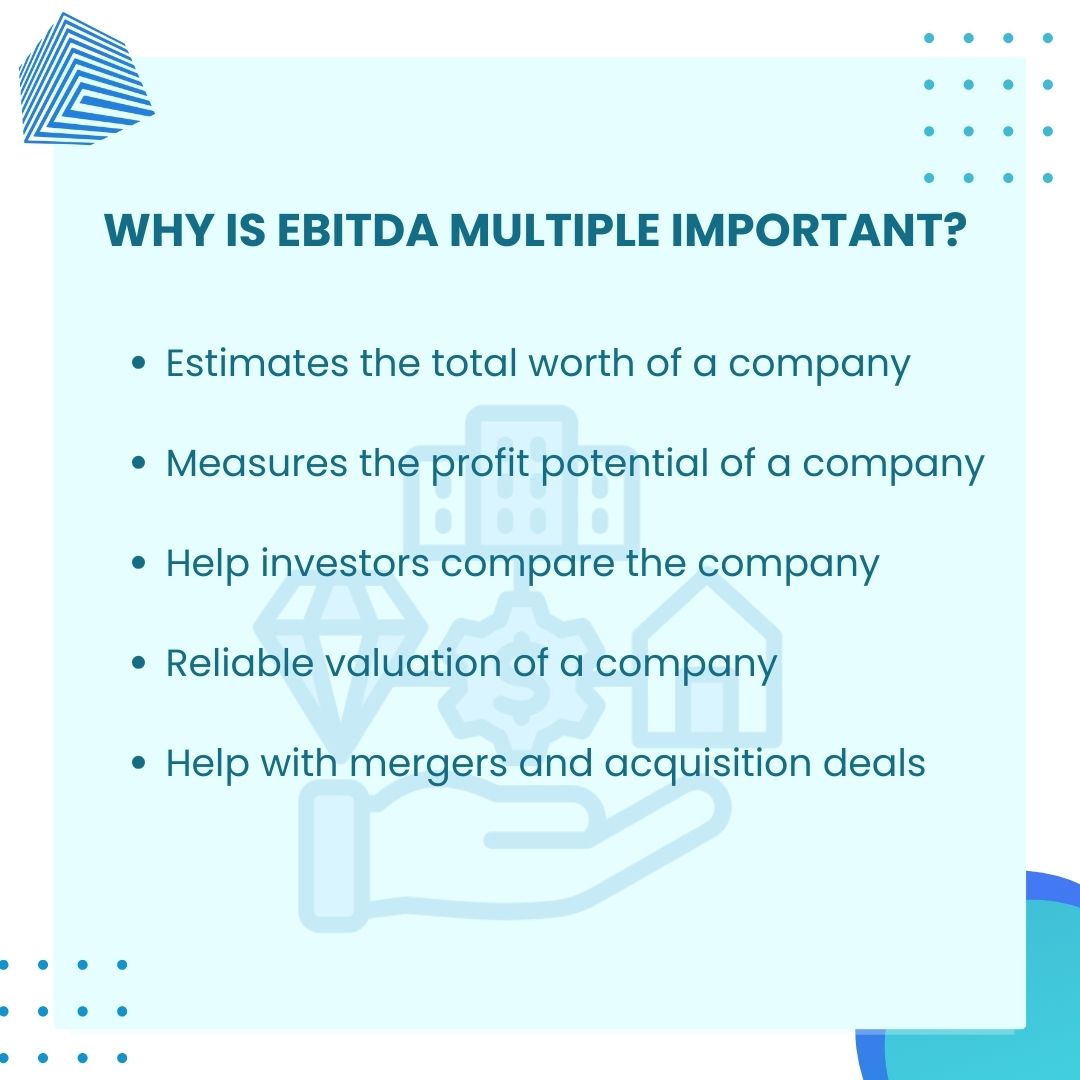Industry Valuation Unveiled: Decoding EBITDA Multiples
Company valuation is the process of determining the economic value of a company. It's a critical aspect of investment analysis, mergers and acquisitions, and financial reporting. Valuing a company involves assessing various factors such as its assets, liabilities, earnings, growth potential, market position, and other qualitative and quantitative aspects. Overall, company valuation provides a quantitative measure of a company's worth, enabling stakeholders to make informed decisions and allocate resources effectively.
There are three types of valuation multiples i.e., equity multiples, enterprise multiples and revenue multiples. EBITDA multiples are a type of enterprise multiples.
What is EBITDA Multiple?
EBITDA stands for Earnings Before Interest Taxes Depreciation and Amortization. EBITDA multiples, derived from the ratio of a company's Enterprise Value to its EBITDA, serve as valuable tools for estimating a company's market worth using standardized factors. They facilitate comparisons with other industry peers possessing similar credentials. Particularly useful within the same industry, these multiples allow for assessments even when companies differ in areas like capital structure, asset ownership, and taxation.
In early stages, revenue multiples are used, while EBITDA multiples are used as a company matures to gauge profit potential. Experienced analysts always consider multiple valuation metrics for a more accurate business valuation.
Why is EBITDA multiple important?
EBITDA multiples are key to understanding a company's value, calculated by comparing its enterprise value and EBITDA. This provides investors with a realistic estimate of what they need to pay to acquire the company
In practice, it is observed that a lower EBITDA multiple within an industry typically corresponds to a more cost-effective acquisition of a company. A value below 10 is generally regarded as favorable in this context.

EBITDA Multiple Formula
The EBITDA multiple, a crucial metric in industry valuation, is derived from two key financial metrics: enterprise value and EBITDA. It is calculated by dividing the enterprise value by the EBITDA. This provides a standardized way to compare companies across industries, aiding investors, and analysts in making informed decisions.
*EBITDA multiple = Enterprise value (EV) / EBITDA multiple
Let's discuss each component individually.
EV is crucial for investors in M&A deals. It considers various factors beyond internal financial metrics to determine a company's true value. Funding decisions should be based on solid figures, and EV serves as a common reference for company valuations. Private equity firms now heavily rely on EV as it indicates the cost of acquiring a business.
Enterprise Value is calculated in two ways. The simplest one is:
*EV = Market cap + Market Value of debt – Cash & Cash equivalents
And the elaborate version of this formula is:
*EV = Common shares + Preferred shares + Market value of debt + Minority interests – Cash & Cash equivalent
Another variation of EV calculation could be:
*EV = Equity Value – Non-Operating Assets + Liability and other minority stakes
Enterprise value is unaffected by a company's capital structure, making it a useful tool for comparing companies for takeover. When included in EBITDA multiple valuations, enterprise value adds reliability to the comparison of companies with different capital structures.
Earnings Before Interest Taxes Depreciation and Amortization or EBITDA is a simple metric used by investors to estimate a company's profitability, excluding non-operating and non-controllable assets. It is easily derived from financial reports, requiring no complex calculations. EBITDA formula is as follows:
*EBITDA = Net profit + Interest + Tax + Depreciation + Amortization
EBITDA measures a company's financial health and future profit potential, making it a key metric in determining profitability for potential takeovers when used as part of EBITDA multiples by industry.
Pros And Cons Of EBITDA Multiple Valuation
EBITDA multiples valuation is commonly used by investors and financial analysts for high-profit mergers and acquisitions. While this method has advantages, it is crucial to be aware of its limitations. Here is a brief about the pros and cons of EBITDA multiples:
Pros Of EBITDA Multiples
- EBITDA multiples are considered uncomplicated and readily calculable.
- EBITDA multiples serve as a valuable tool for the comparative analysis of companies within a given industry.
- EBITDA multiples may offer insight into the financial stability of a company.
Cons Of EBITDA Multiples
- EBITDA multiples disregard a company's capital structure.
- EBITDA multiples may be deceptive in the presence of high debt levels or significant non-recurring expenses.
- EBITDA multiples do not consider a company's growth prospects.






